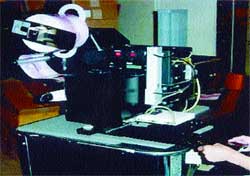January 29, 2014

Time can be a great deceiver. Discuss various functions in a packaging operation, and those that matter most don't always involve speed. Take as an example the frustration level growing out of a high reject rate. Having to discard or rework an unacceptable package can inflate costs quickly, since it involves people, materials and time.
That's one of the more significant factors behind Autocrat Coffee's recent switch to semi-automatically applied labels for 12-oz and 5-lb bags of its Newport Coffee Traders coffee, packaged in its Lincoln, RI, plant. Introduced nine months ago, the premium specialty coffees sell as whole bean in both sizes and ground in the 12-oz bag, in small gourmet coffee shops from Maine to New York City.
As is often the experience with a new brand, packaging output was initially low and waste high, says Autocrat coffee production manager David Bulman. With manually applied labels ranging from 17/8 x 7/8-in. to 53/4 x 6-in. dimensions, the bar-code and bean identification labels were sometimes applied incorrectly, resulting in a considerable bag discard rate. A 100/hr output was average. Not any more. Autocrat is now labeling at 1,000/hr with tremendously increased accuracy and a near-zero rejection rate, and rejects happen only at a shift's start, with only a few bags involved. The increased accuracy is the result of a program developed with systems integrator Winco Identification, which proposed and then installed a semi-automatic label applicator, the Paragon Express from Paragon Labeling Systems. The tamp-on version of this machine applies at speeds up to 22 in./sec, more than adequate for manual feeding of the bags.
|
A semi-automated print/apply labeler for p-s stock enables customization of Autocrat's coffees while reducing bag inventories. |
With a 1/32-in. placement accuracy and automatic calibration, the machine is simple to operate. As a bag is placed in the x/y location, a fiberoptic sensor detects its presence, feeds a label from rollstock by a stepper motor drive and tamps it on. Bulman notes that with the machine, instead of 10 production hours, it only takes one production hour to apply labels to the same number of bags. "And, when you start applying labels, they are placed in the same spot each time," he adds.
Dramatizing the need for accuracy on tight deadlines is the fact, he explains, that the Newport series includes five straight and about 10 flavored coffees. Thus, with the improved output, changeovers come more quickly and downtime, related to errors or not, becomes more costly. At present, working with multisourced pressure-sensitive stock, the system can be fully automated. And, it can create its own labels by moving to a compatible Zebra, Datamax or Sato print-and-apply module as demand rises, says Winco sales representative Rick Marshall.
For the Newport coffees, as well as for those packed for private-label customers by the 107-year-old company, Autocrat fills both sizes on a seasoned semi-automatic machine. The bags are then nitrogen-flushed, and a vacuum is drawn on Fres-co System's GLll. Fres-co also produces the bags. For the 12-oz bag, the lamination is (from the outside) 48-ga polyester/.00028 foil/48-ga polyester/3-mil linear low-density polyethylene. The same specification applies to the 5-lb size, except the LLDPE is a 3.85-mil thickness. The 12-oz bag includes a tin-tie reclosure, supplied through Bedford Industries.
David Bulman recalls that during installation of applicator, Rick Marshall and a Winco technician trained Autocrat workers on the system's use, and the rep checked several times to be sure everything was working.
More information is available:
Labeler integration/installation: Winco Identification, 800/325-5260. Circle No. 214.
Label applicator: Paragon Labeling Systems, 800/429-7722. Circle No. 215.
Vacuum machine/bags: Fres-co System USA, 800/373-7266. Circle No. 216.
Tin-tie reclosure: Bedford Industries, 800/533-5314. Circle No. 217.
About the Author(s)
You May Also Like



